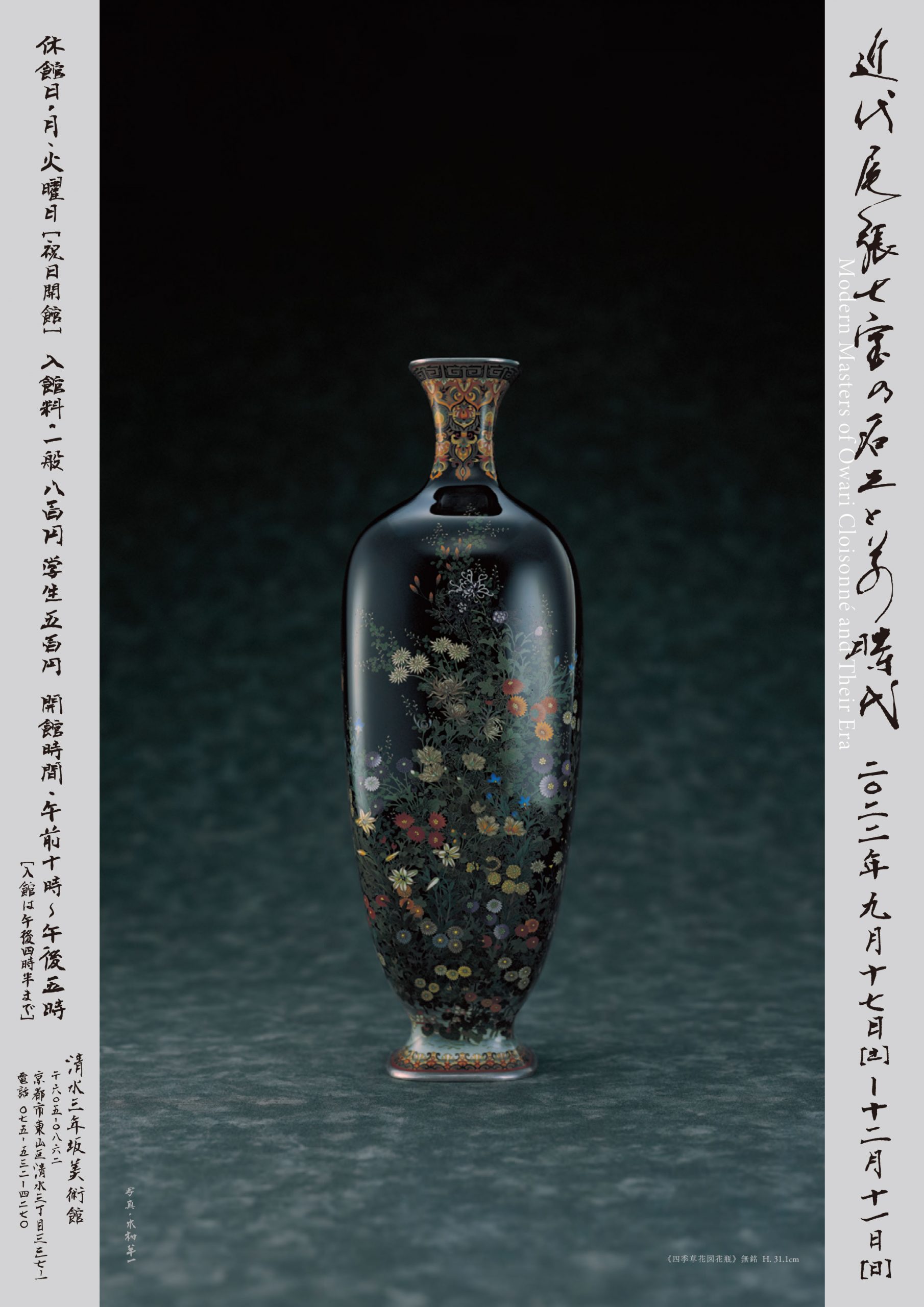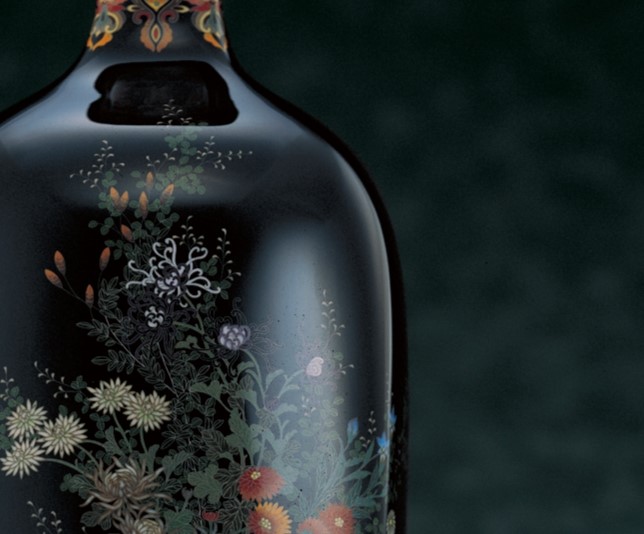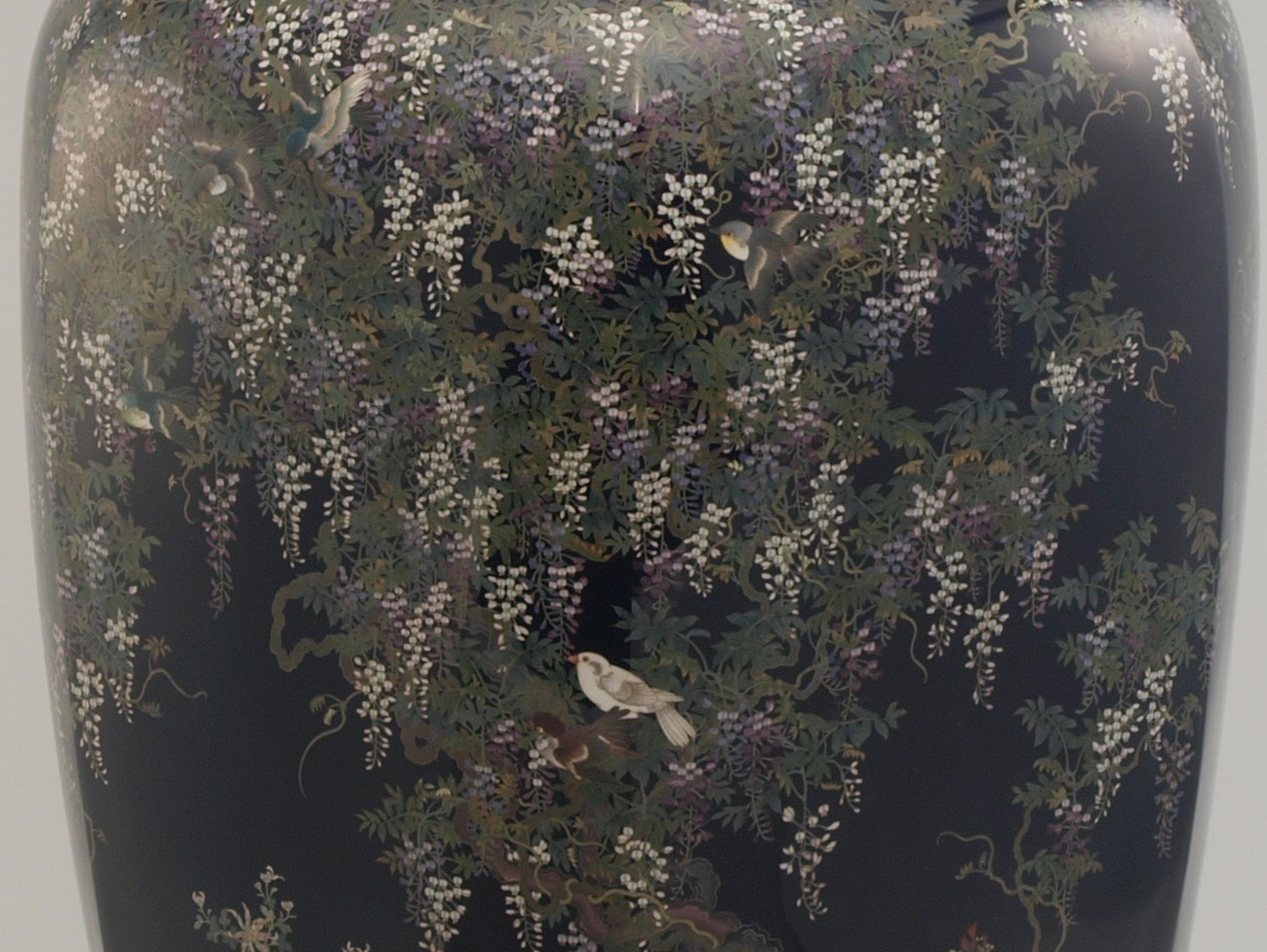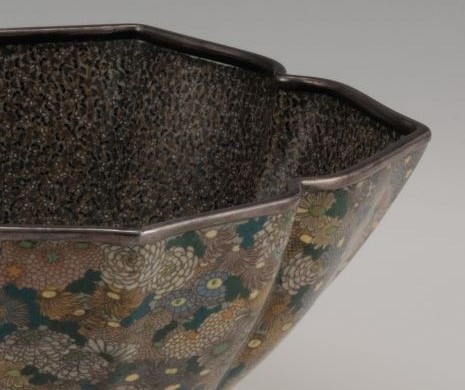
Modern Masters of Owari Cloisonné and Their Era
Modern Japanese cloisonné had its beginning with a successful production attained by Kaji Tsunekichi of the Owari Domain in 1833 (Tenpo 4). Tsunekichi originated his cloisonné technique based on a dish brought to Japan aboard a Dutch ship, and it involved laying out images on a surface using thin metal wires and then filling the cells enclosed by those wires with vitreous enamels. Later, after the technique was passed down to Hayashi Shogoro of Owari’s Toshima Village (modern day Shippo-cho Toshima, Ama-shi, Aichi Prefecture), Owari became a major center of modern cloisonné production.
After Japan’s opening to the outside world, modern cloisonné producers sought overseas markets and won positive reputations in exhibitions at international world expositions. With the resultant increase in demand, Owari craftsmen were invited to pursue their craft in various places, which led to rapid technological innovations of cloisonné technique.
The Kiyomizu Sannenzaka Museum holds many pieces produced at modern cloisonné’s height, in particular the time from the Meiji 20s (1887-97) through the Taisho period (1912-1926). And among these, numerous Owari specimens display a wealth of seasonal birds and flowers richly drawn using minutely detailed wires and brilliantly colored enamels over translucent backgrounds of a dusky purple that overflow with a wondrous charm.
The present exhibition features pieces by the master Owari craftsmen Hayashi Kodenji, Kawade Shibataro, and Kumeno Teitaro. We invite you to peruse at your leisure these crystallizations, it might be said, of an encounter between unparalleled artisanal effort and the West.
 2025-12-23 / 2022-09-17
2025-12-23 / 2022-09-17 

